Sidebar
Punica granatum - Pomegranate
Description and Uses
Punica granatum (Pomegranate) is a tropical tree from Mesopotamia . It is mainly grown for its fruit crops , which have a medium shelf life. The crop is harvested by hand picking. It starts flowering after 7 - 8 years. The yield will be 7 kg/tree, but in its top season there will be a yield of 25 kg/tree. Other crop types include; alcohol, apiculture, fruit, oil, ornamental, timber, The fruit is used as delicacy . The fruit is used as " high vitamin-C content, anti-inflammatory, " with ascorbic acid (362 mg/l - 372 mg/l) as its significant phytochemical. There is pomegrane seed oil extracted by solvent extraction from the tree's seed/nut yielding 4%/seed - 5%/seed oil. The tree's wood is called pomegranate wood and has a density of 760 - 780 kg/m³. Regarding firewood production the tree's growing speed is slow, it's energetic value is 4400 ckal/kg and the wood's drying speed is fast. After 50 years the tree can be totally removed as it reached its commercial and ecological goal. Punica granatum has a lifespan of 100 years.
Environmental limitations
The tree is
8 meters tall with a crown of
6 meters wide. The
tree prefers a planting distance of
250 cm and a row distance of
600 cm. It is
slow growing and
intolerant to shade.
Punica granatum has a
deep root-system and it has symbiotic associations with the
Glomus intraradices fungi
(endo-mycorrhiza). It is
not able to fix nitrogen with
"any bacteria. The name(s) or string of bacteria include(s)
"Sinorhizobium americanum ". The
tree's flower-morphology is
hermaphroditic and is pollinated by
bees.
Punica granatum is
evergreen and
not allelopathic and has
thorns.
Punica granatum thrives in an altitude of
0 to
1500 meters above sea-level
(tropical). The minimum temperature is
-11°C; optimally between
15 -
40°C. The optimal rainfall is
1150
mm/year. Without irrigation the annual rainfall should be between
400 -
1500mm (L/m²). The optimal soil-pH is between
6.0 -
7.0 in a soil texture of
sand. To salt it is
tolerant to wind
tolerant and to fire
a bit tolerant.
Pests and Diseases
Punica granatum is susceptible to the following pests: Anastrepha ludens , Dacus dorsalis , Dacus zonatus , Indarbela quadrinotata , Virachola isocrates . Indarbela tetraonis And it's susceptible to the following diseases: Witches broom , Angular leaf spot , .
Seed Propagation
Seeds are orthodox and can be stored for 2 months. There are approximative 75000 seeds/kg. The seeds can be propagated as followed:
- (1) Store harvested seeds in water or in the fruit at room temperature
- (3) Remove the seeds from cold to a permanent warm temperature.
- (3) Seeds germinate above ground (epigeous)
| Vertical Photo [+] |
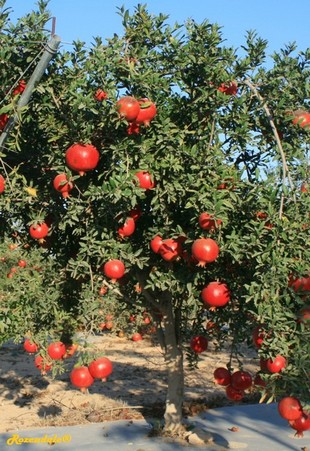
|
Sdeh Boker, Israel - 2011-08-31 |
| Seeds Photo [+] [Buy Seeds] |

|
Rijs, Netherlands - 2019-12-10 |
| Detail Photo [+] [Mother Plants] |
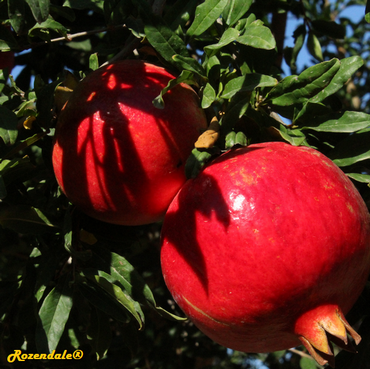
|
Nahal Nitsana, Israel - 2017-10-10 |
| Seedling Photo [+] [Buy Seedlings] |
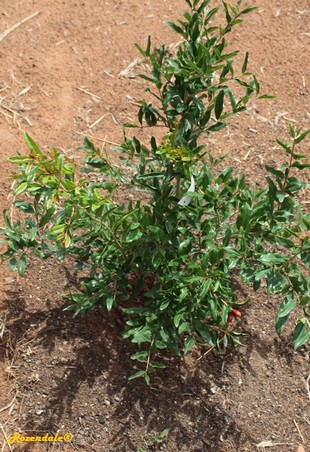
|
Coral Gables, United States - 2017-02-22 |
| Stem Photo [+] |
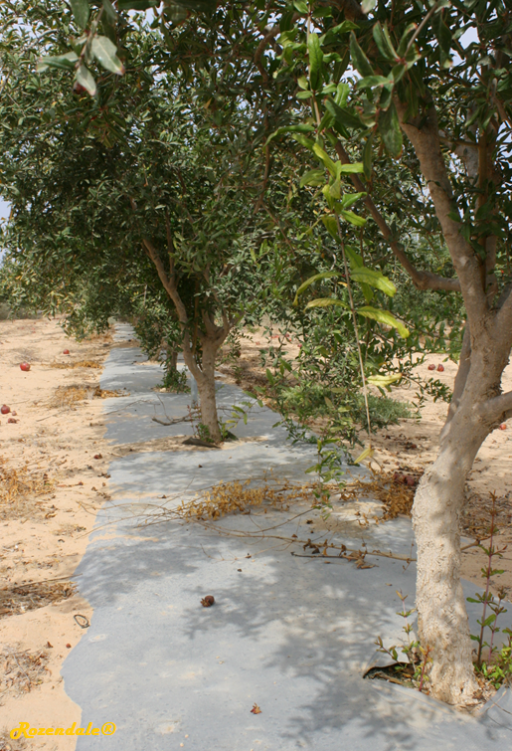
|
Be'er Milka, Israel, Israel - 2011-09-22 |
| [Crops Photos] [+] [Buy Crops] |
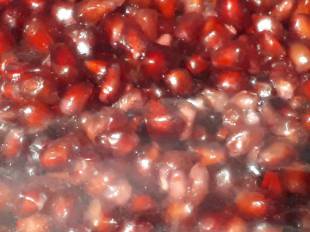
|
Sneek, Netherlands - |
| * |
- Botanical Taxonomy - |
|
|---|---|
|
Clade
[+] Order [+] Family [+] Sub-family [+] Species Common name |
Rosids Myrtales Lythraceae Punicoideae Punica granatum Pomegranate |

|
|---|
| Parameter | Rating |
|---|---|
|
Fruit Nut Apiculture Fodder Medicinal Oil Timber Grow-speed Firewood |
|
See also |
|
|---|---|